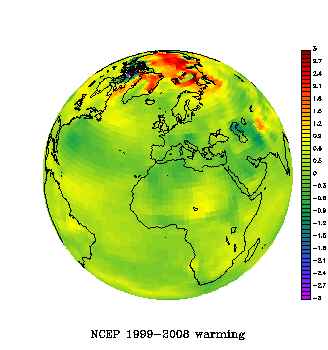The great thing about complex data is that one can basically come up with any number of headlines describing it – all of which can be literally true – but that give very different impressions. Thus we are sure that you will soon read that 2008 was warmer than any year in the 20th Century (with the exception of 1998), that is was the coolest year this century (starting from 2001), and that 7 or 8 of the 9 warmest years have occurred since 2000. There will undoubtedly also be a number of claims made that aren’t true; 2008 is not the coolest year this decade (that was 2000), global warming hasn’t ‘stopped’, CO2 continues to be a greenhouse gas, and such variability is indeed predicted by climate models. Today’s post is therefore dedicated to cutting through the hype and looking at the bigger picture.
2008 temperature summaries and spin
 ) (
) ( )
)  Browsing through the blogosphere recently, I came across an interesting little story about the scientific method, scientific progress, and un-scientific spin (h/t
Browsing through the blogosphere recently, I came across an interesting little story about the scientific method, scientific progress, and un-scientific spin (h/t 

